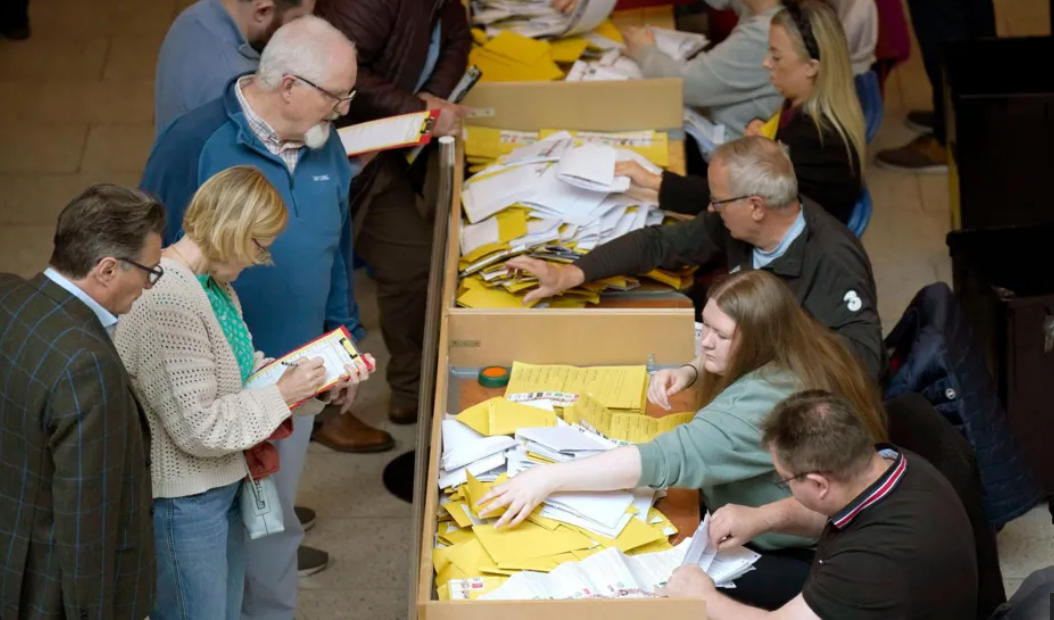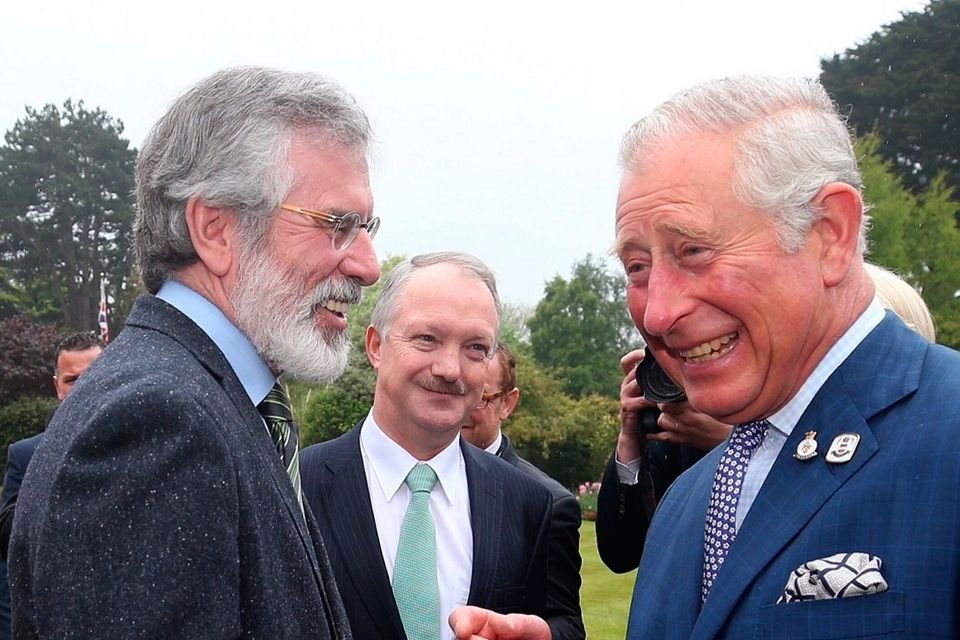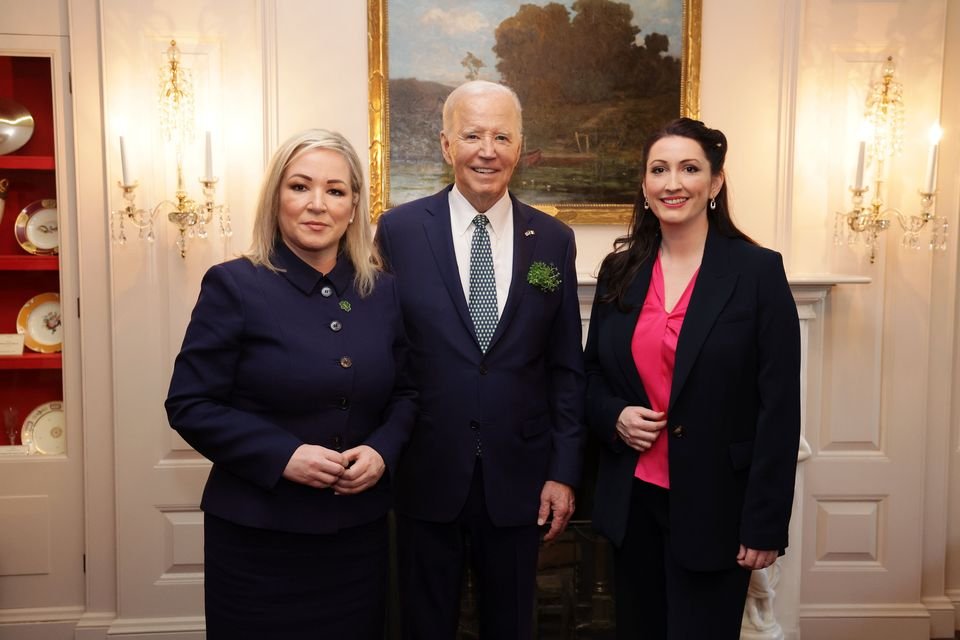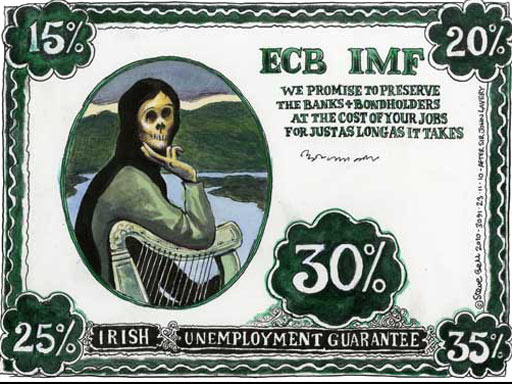Sinn Féin Election Disaster – The Price Of Putting Popularity Before Principle – Éirigí Analysis
Éirigí, a socialist-republican organisation, “is a political party that was formed in 2006 by a group of Dublin-based community and political activists. We believe that modern Ireland is a deeply undemocratic, unequal and unfair country not by accident, but by design.” Their analysis of Sinn Féin’s unexpectedly weak showing in the June 7 2024 Irish Local and European Elections highlights how the party was bounced into changing its position on immigration and racism :
With a few notable exceptions, this new talking point was propagated without context – with no detailed critique of migration in the modern world – no attempt to explain why the asylum process is in chaos – no robust defence of the core republican principle of equality – no assertion that racism, sectarianism and xenophobia are the enemies of republicanism – no calling out the peddling of hate and division by the far-right.
For potential Sinn Féin voters, the lesson was clear. The party could be bounced into changing its messaging if there were votes at stake, even when those doing the bouncing were far-right bigots. It seems almost certain that the ease with which Sinn Féin was bounced on the issue of immigration did them more electoral damage than their actual position on immigration.
Sinn Féin Election Disaster – The Price Of Putting Popularity Before Principle
Link :
Sinn Féin Election Disaster – The Price Of Putting Popularity Before Principle – Éirigí analysis
Two weeks have now passed since the Local and European elections in the Twenty-Six Counties. Despite Sinn Féin’s frantic spinning to the contrary, the election was nothing short of an unmitigated disaster for the party. The number of votes and seats secured by the party was even lower than the lowest expectations of pollsters, political commentators and Sinn Féin itself.
As recently as July 2022, support for Sinn Féin was at a level not seen in more than a century. The Irish Times/IPSOS opinion poll for that month found that 36% of voters in the Twenty-Six Counties intended to vote for Sinn Féin.

Fourteen months later, in September 2023, the same poll found that 34% still intended to vote for Sinn Féin. Among voters under the age of 34, support was even higher at more than 43%. Despite this, Sinn Féin secured less than 12% of the popular vote in the 2024 Local and European elections.
So, why have two-thirds of Sinn Féin supporters abandoned the party since last September?
Prior to elections the apparent answer to this question seemed obvious to many – immigration. Immigration, it was claimed, had recently become a red-hot issue for many Sinn Féin supporters., and these supporters were now walking away from Sinn Féin in their droves because the party was too ‘soft’ on immigration. It was an open and shut case. Until it wasn’t.
When the ballot boxes were opened on this day two weeks ago, it quickly became clear that the opinion polls had significantly underestimated the scale of Sinn Féin’s woes.
From a high of 36% in the opinion polls two years ago, to the reality of less than 12% in both the Local and European elections – Sinn Féin had somehow managed to lose the support of a staggering 24% of the electorate, and all while still in opposition.
If the accepted pre-election theory for Sinn Féin haemorrhaging support was correct, hundreds of thousands of voters had abandoned the party because it was ‘too soft’ on immigration. If these voters felt so strongly about immigration, logic dictates that they were now going to vote for candidates who were significantly ‘tougher’ on immigration. But they did not.
While far-right parties and candidates received significantly more votes in these elections than in previous ones, their overall collective vote accounted for only a fraction of the the 24% of the electorate that Sinn Féin has ‘lost’ since last September.
While the issue of immigration has most definitely become much more prominent in recent times, the ‘Sinn Féin vote is collapsing because they are too soft on immigration’ theory was massively undermined by the election results.
For every former Sinn Féin supporter who pivoted to the far-right, there are at least four others who pivoted to the centrist parties or to candidates to the left of Sinn Féin.

That begs the question, what was the real reason for Sinn Féin’s collapse?
Unfortunately for Sinn Féin, the answer to this question goes to the heart of the strategy which has guided the party’s every step for the last thirty years.
This strategy, when boiled down to its core, proposes that the road to Irish reunification will be shortened through maximising the Sinn Féin vote and getting the party into government on both sides of the border.
Everything that the Sinn Féin leadership has done since the 1990s must be viewed through the prism of this strategy and the impetus to exponentially grow the Sinn Féin vote.
To this end, every barrier – real or perceived – that might have prevented people voting for Sinn Féin or prevented Sinn Féin from entering government has been systematically removed. Political positions that the same leadership had once championed as core republican principles fell like dominoes from 1998 onward.
The IRA was disarmed and stood down without achieving a British commitment of withdrawal. The unionist veto was accepted. British policing and justice was supported. Sinn Féin began to administer British rule in Stormont. British royals were bowed to.
Even history was not immune. Sinn Féin figures were soon issuing regular apologies for actions that had been carried out by the IRA decades previously, in the hope that such apologies might make the party less voter-repellent. The ridiculousness of Sinn Féin spokespeople apologising for historic events which happened before they were even born was not lost on the electorate.
Positions relating to the British occupation were not the only ones to be disregarded. Sinn Féin’s hyper-scepticism of the European Union was replaced with ‘constructive engagement’. Demands for the nationalisation of natural resources were shelved. Opposition to the 12.5% rate of corporation tax was dropped. Proposals for higher earners to pay more tax were diluted. All talk of revolutionary change was banished.
Sinn Féin policy was now to be anchored in electoral expediency, not ‘outdated ideology.’ Without a clear ideological anchor, policy would be determined on the basis of how it would play with the electorate alone.

In parallel to removing the ‘barriers’ that might have prevented people from voting Sinn Féin, the leadership also set about reshaping the party into a narrowly focused vote-harvesting machine.
An organisational model which was nominally based on a cadre of highly motivated voluntary activists and a network of campaigning cumann was replaced with tick-the-box online membership and full time, office-based staff and elected representatives.
Internal political education for party members was scrapped. Political campaigning was reduced to press releases and photo-ops featuring elected representatives. The general membership would only now be mobilised in a sustained manner for one purpose and one purpose only – to fight elections.
It has taken the Sinn Féin leadership the best part of thirty years to shed all of the inconvenient policies that were deemed to be barriers to growing the vote; along with shedding all of those inconvenient people who opposed the rush to political expediency and the downgrading of the party membership to election workers. The chickens are now coming home to roost.
Over the course of the last nine months, two issues have caused large numbers of voters to doubt Sinn Féin’s sincerity and integrity.
The first of those issues is immigration, which the far-right attempted to weaponise ahead of the Local and European local elections. For electoral purposes, the far-right have sought to blame Sinn Féin for the immigration policies of the Dublin government. Through social media they have heavily pushed the narrative that Sinn Féin has betrayed the Irish people through its support for ‘open borders’.
When faced with these charges, the Sinn Féin leadership responded like a rabbit caught in the headlights of an oncoming truck. Their response to being labelled as ‘traitors’ was largely silence. When Sinn Féin figures were harassed by mobile phone yielding far-right agitators, they had no effective response – and they looked weak for it.
Eventually, after months of silence and just weeks before the elections, Sinn Féin spokespeople and leaflets started pumping out a brand-new message – ‘Sinn Féin is opposed to open borders’.

With a few notable exceptions, this new talking point was propagated without context – with no detailed critique of migration in the modern world – no attempt to explain why the asylum process is in chaos – no robust defence of the core republican principle of equality – no assertion that racism, sectarianism and xenophobia are the enemies of republicanism – no calling out the peddling of hate and division by the far-right.
For potential Sinn Féin voters, the lesson was clear. The party could be bounced into changing its messaging if there were votes at stake, even when those doing the bouncing were far-right bigots. It seems almost certain that the ease with which Sinn Féin was bounced on the issue of immigration did them more electoral damage than their actual position on immigration.
The second recent issue which caused many voters to doubt Sinn Féin’s integrity was the party’s failure to boycott the annual St Patrick’s Day bash at the White House in Washington D.C. in protest at US President Joe Biden’s support for Israel’s genocidal campaign against the Palestinian people.
While this issue may not have generated as many headlines or as much social media outrage as the issue of immigration, there is no doubt that many Sinn Féin leaning voters were quietly disgusted with the party for trading niceties with Joe Biden while Palestinians were being slaughtered by US-supplied bombs.
By the time polling day came around, Sinn Féin were not just been outflanked on Palestine by People Before Profit, the Social Democrats and the Labour Party, it was also outflanked by a Dublin government which looked more politically coherent and consistent on the issue than Sinn Féin.
Thus, the two apparently divergent issues of immigration and Palestine fed into a growing public suspicion that Sinn Féin lacks integrity and cannot be trusted to stand by its own stated positions – a suspicion that has grown steadily since the heady days of last September when Sinn Féin was sitting at 34% in the opinion polls.
This suspicion about Sinn Féin’s integrity did far more damage to the party than the issue of immigration or the emergent far-right. It was this suspicion that drove masses of potential Sinn Féin voters away from the party and towards the two big centrist beasts of Fine Gael and Fianna Fáil and towards smaller, more ideologically anchored parties of the left and right.
The Local and European local elections do not represent an existential threat to Sinn Féin as a political project, but it should represent an existential threat to the ‘strategy’ that has guided that party for the last thirty years. It should, but it won’t.

To admit that their strategy is fundamentally flawed would be to admit to thirty years of flawed analysis and catastrophically bad decision making.
In many ways, the Sinn Féin of 2024 is a product of the strategy as opposed to the master of it. The current Sinn Féin leadership, with Mary Lou McDonald as it’s figurehead, is as committed to the strategy as the leadership was under Gerry Adams.
Instead of abandoning the strategy, the Sinn Féin leadership will double down on it, in the hope that the next general election might produce a repeat of the 2020 general election when Sinn Féin staged a Lazarus like recovery from the 2019 local elections. And given the fickle nature of electoral politics, that might well happen.
But if it does, that will not change the nature of what Sinn Féin is. Nor will it change the pressing need for a new republican movement to emerge – a new movement that is unashamedly anchored in the radical republican principles that have guided Ireland’s revolutionaries since the time of Wolfe Tone.
Sinn Féin now faces a significant challenge in rebuilding electoral support in the Twenty-Six Counties, and given the fickle nature of electoral politics, it is not beyond belief that they can pull it off.
But what Sinn Féin will never do again is lay legitimate claim to the cause of revolutionary Irish republicanism. That claim now falls to those who remain true to the cause of the Republic and who are willing to play their part in the slow, painstaking work of rebuilding the republican movement.

Leave a comment